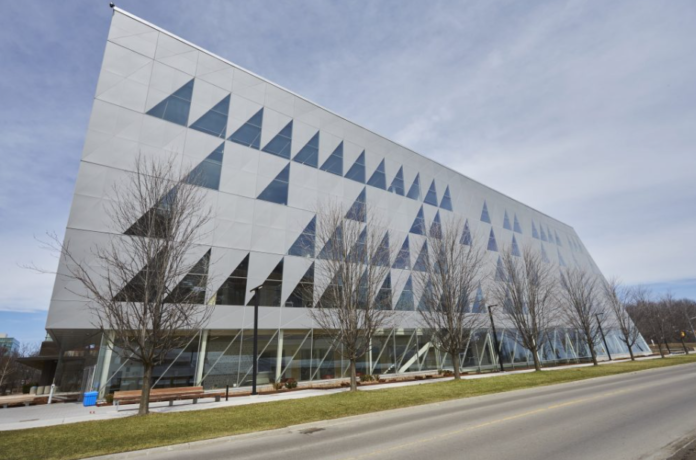Ontario Construction News
After nine years of planning, the York University school of continuing education is uniting programs under one roof – a state-of-the-art building with a unique, twisted design.
The new, space at 68 The Pond Road on York’s Keele Campus is a response to growth of the School, as well as the need for continuing education options to respond to the growing skills gaps and talent shortages in Canada. The six-story, 120,000-square-foot, 50-classroom, building serves as an example of how a post-pandemic learning space can blend in-person and virtual learning formats using the latest technology to support the needs of students.
“We have been a leader in the lifelong learning space since our inception and we had the goal to create dedicated space to accommodate the unique needs of continuing education students locally and from abroad, many of whom are seeking to complement degree programs and/or upgrade and reskill in a labour market that is being profoundly impacted by automation and AI,” said York University President and Vice-Chancellor Rhonda Lenton.
In 2018, the architecture firm Perkins & Will was selected to design the building, led by architects Safdar Abidi and Andrew Frontini. The twisted architecture symbolizes the School’s twist on the traditional mission of continuing studies to solve Canada’s most pressing labour market gaps by connecting employers and a highly-skilled, ambitious talent pool through its innovative language and professional programs.
“The York University School of Continuing Studies is transforming the Canadian workforce by reinventing traditional models of education and transforming barriers to education into opportunities. Our leading edge, cohort programs are co-developed with industry to develop graduates prepared to thrive in a skills-based economy. Last year alone we delivered more than a million hours of learning,” says Brooks-Cappadocia.
The structure is built to ensure complete adherence to sustainability in design. The building is designed to LEED Gold, and meets the City of Toronto green standards. Strategies used include a high-performing façade system, direct outside air system with heat recovery ventilation, and daylight harvesting. The building is well positioned to achieve Net Zero in the future due to its low energy consumption. Additionally, the building is designed with the principles of diversity, equity, inclusion and sustainability.
“From having guide rails for students with sight impairment to touch-free surfaces to the lactation room for nursing mothers and a prayer and meditation room. Everyone is welcome and supported in pursuing their educational goals.”
Other key accessibility features include automated doors, standing desks in all classrooms, screens for the visually impaired, elevators, and large hallways spaces for those requiring wheelchair access.







